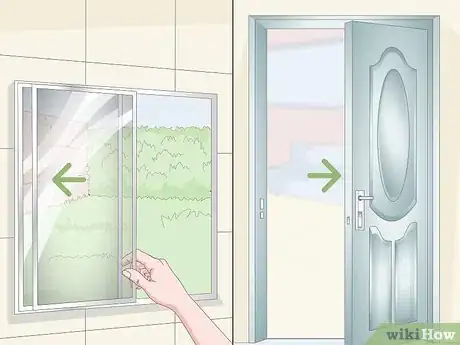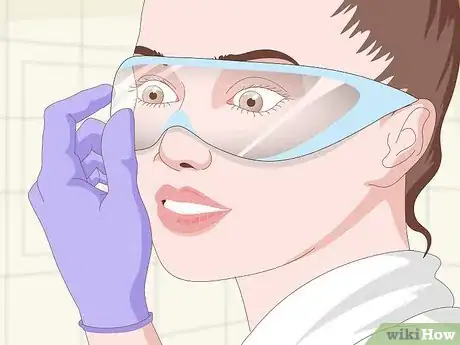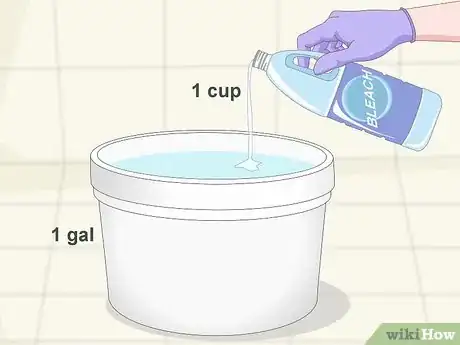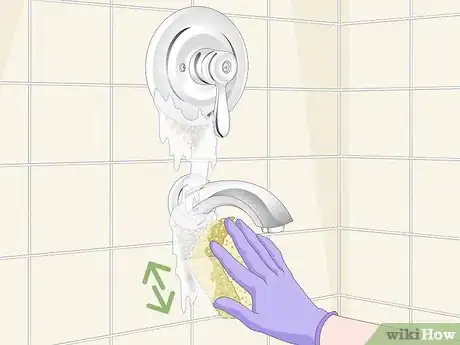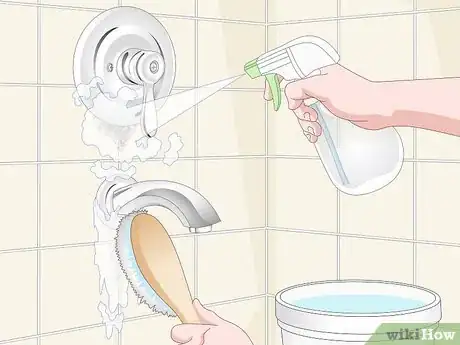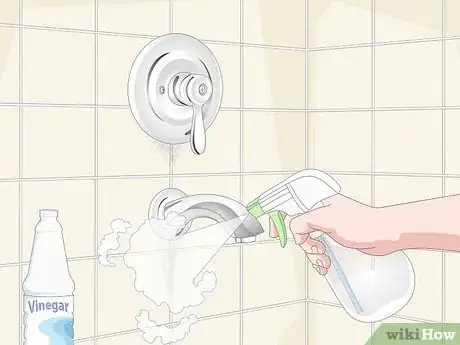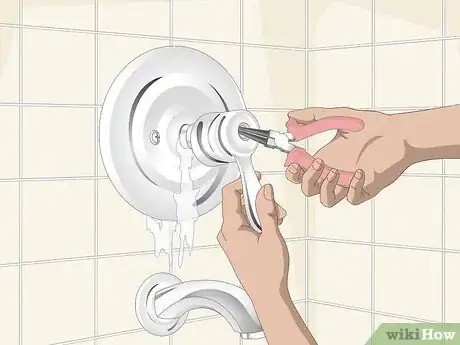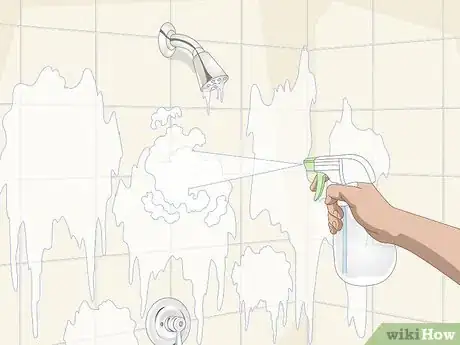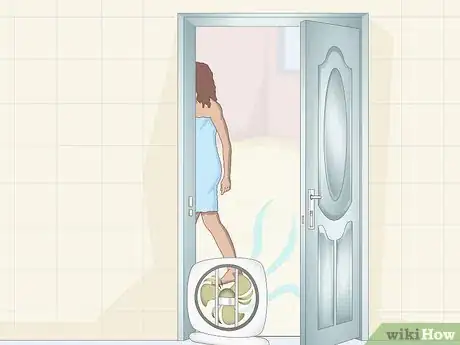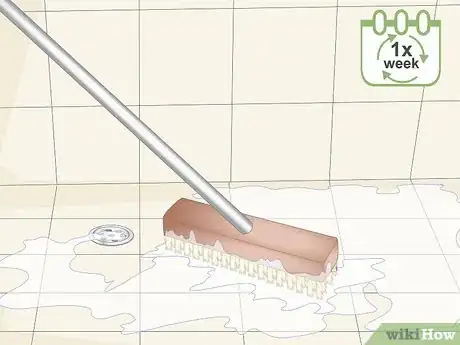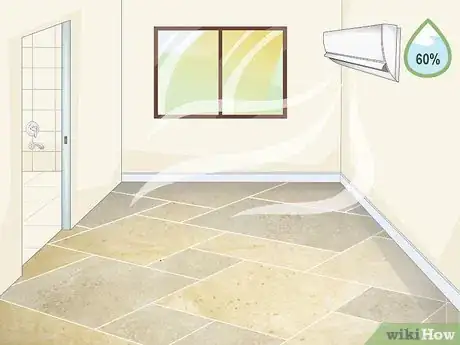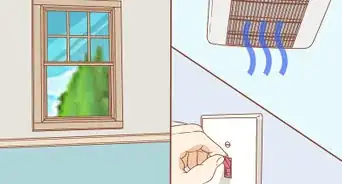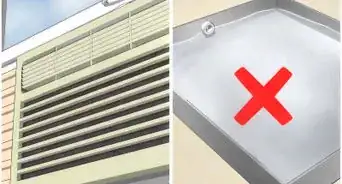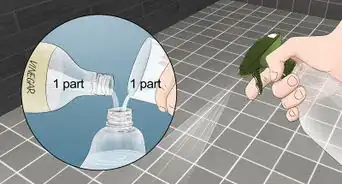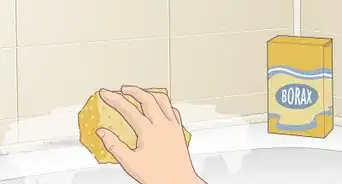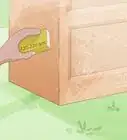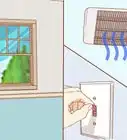This article was co-authored by Bridgett Price. Bridgett Price is a Cleaning Guru and Co-Owner of Maideasy, a maid service company that services the Phoenix, Arizona metropolitan area. She holds a Master of Management from the University of Phoenix, specializing in digital and traditional marketing.
There are 12 references cited in this article, which can be found at the bottom of the page.
This article has been viewed 36,332 times.
While black mold sounds scary, it's really isn't much worse than other types of molds. Any mold can cause respiratory issues, and if you have asthma or you're susceptible to pneumonia, it could cause issues for you. However, the Center for Disease Control suggests that you can clean up all types of mold in your home the same way using a bleach solution without having to call out for extra help, as long as you take precautions like wearing gloves and a dust mask. However, if you have mold that has seeped into the wall or other porous areas, you may need help removing the damaged materials and replacing them, as well as finding the source of the water causing the mold.
Steps
Using a Bleach Solution
-
1Open the windows and doors in the area for ventilation. When using bleach, it's always a good idea to create good ventilation. Try to open as many nearby windows as you can, particularly if there's one in the bathroom.[1]
- If there's not a window in the bathroom, place a fan blowing air out of the bathroom toward an open window.
-
2Put on gloves and goggles. Choose gloves that won't let the mold through, such as rubber cleaning gloves or latex gloves. Don't touch the mold with your hands. Similarly, goggles are a good idea, as you don't want to flip mold spores into your eyes accidentally.[2]
- You may also want to wear a dust mask that filters out mold.
- These precautions will also protect you from the bleach.
Advertisement -
3Mix 1 cup (0.24 L) of bleach into 1 gallon (3.8 L) of water. Measure out the water first, and then pour the bleach into the water. Use a spoon or a paint stick to stir it together so it is is well mixed. Try not to splash it as you're stirring.[3]
- Make sure you never mix bleach with ammonia, as it creates toxic gases.
- If you prefer, you can start out with an antifungal cleaning solution that doesn't contain ammonia, then follow up with bleach after you get most of the mold off.[4]
-
4Dip a sponge or cloth into the bleach solution and scrub down the mold. Squeeze out the excess and begin scrubbing the moldy areas. Knock off as much mold as you can and dip the cloth or sponge back into the bleach solution as needed.[5]
- You can also rinse out the cloth in running water before dipping it back in the solution so you're not returning as much mold to your cleaning solution.
-
5Use a scrubbing brush where the mold won't come off. If you have areas where you're having trouble removing the mold, dip a toothbrush or other scrubbing brush into the cleaning solution. Run it over the moldy areas, using a small circular motion to get the mold off.[6]
-
6Make a new bleach solution to spray and scrub down what's left. Once you've scrubbed away all you can, pour a new mixture of bleach and water into a spray bottle, keeping the same ratio as you did before. Spritz the stains left behind, and let it sit for 15 minutes or so.[7]
- Once you've left it alone, run over it with a clean scrubbing brush. Wash off the bleach solution with clean water and let it dry.
-
7Spritz plain white vinegar over the area to take care of what's left of the mold. Don't mix the vinegar with water. Just put it in a spray bottle and go over the area to get it damp. Let the vinegar dry on the area, and it will help kill off the mold that's left behind.[8]
Preventing Future Growth
-
1Fix any leaks you can see. If a leak is causing the problem, it's time to take care of that! Replace leaky faucet heads, for instance, or if the leak is more than you can handle, call in a professional to find and fix the leak.[9]
- If you don't fix the leak, the mold will just return.
-
2Spray the area down with vinegar after every shower. To help prevent the mold from coming back, keep a spray bottle in your bathroom. Then, spray down the walls and tub after you get done with your shower. The vinegar will help kill the mold spores.[10]
- If the smell bothers you, add a few drops of essential oil, such as peppermint, citrus, or tea tree oil, to help cover up the scent.
-
3Air out the bathroom after you shower. If you have an exhaust fan, use it. If you don't, make sure to keep the door to the bathroom open after you shower so the air can dry out. Too much humidity in a small space can lead to mold.[11]
- If you don't have an exhaust fan, try placing a fan in the door to blow the air into the rest of your home.
-
4
-
5Use your air conditioning in the summer to keep the humidity low. Pulling humidity out of the air is one of your AC's main jobs, so you should run it in the summer when it's humid out. If you don't have an AC, try using a dehumidifier to reduce the humidity.[13]
- If possible, keep the humidity in your home under 60%. Today's smart thermostats often have a way to change the humidity, at least in the summer. In the winter, it shouldn't be much of an issue.
Expert Q&A
Did you know you can get expert answers for this article?
Unlock expert answers by supporting wikiHow
-
QuestionWhat is the best cleaner for mold in shower?
 Bridgett PriceBridgett Price is a Cleaning Guru and Co-Owner of Maideasy, a maid service company that services the Phoenix, Arizona metropolitan area. She holds a Master of Management from the University of Phoenix, specializing in digital and traditional marketing.
Bridgett PriceBridgett Price is a Cleaning Guru and Co-Owner of Maideasy, a maid service company that services the Phoenix, Arizona metropolitan area. She holds a Master of Management from the University of Phoenix, specializing in digital and traditional marketing.
House Cleaning Professional If you need to clean black mold around the caulking of your tub or around your shower head, you can kill it with a mixture of water and bleach, or you can use hydrogen peroxide or baking soda and water. However, if the mold covers an area larger than about half a bathroom rug, call a professional in to clean the mold, because it could be a sign of a bigger problem.
If you need to clean black mold around the caulking of your tub or around your shower head, you can kill it with a mixture of water and bleach, or you can use hydrogen peroxide or baking soda and water. However, if the mold covers an area larger than about half a bathroom rug, call a professional in to clean the mold, because it could be a sign of a bigger problem.
References
- ↑ https://www.cdc.gov/mold/stachy.htm#note
- ↑ https://www.epa.gov/mold/mold-remediation-schools-and-commercial-buildings-guide
- ↑ https://www.cdc.gov/mold/stachy.htm#note
- ↑ https://www.bobvila.com/articles/black-mold-in-bathroom/
- ↑ https://www.bobvila.com/articles/black-mold-in-bathroom/
- ↑ https://www.bobvila.com/articles/black-mold-in-bathroom/
- ↑ https://www.bobvila.com/articles/black-mold-in-bathroom/
- ↑ https://www.bobvila.com/articles/black-mold-in-bathroom/
- ↑ https://www.epa.gov/mold/mold-remediation-schools-and-commercial-buildings-guide
